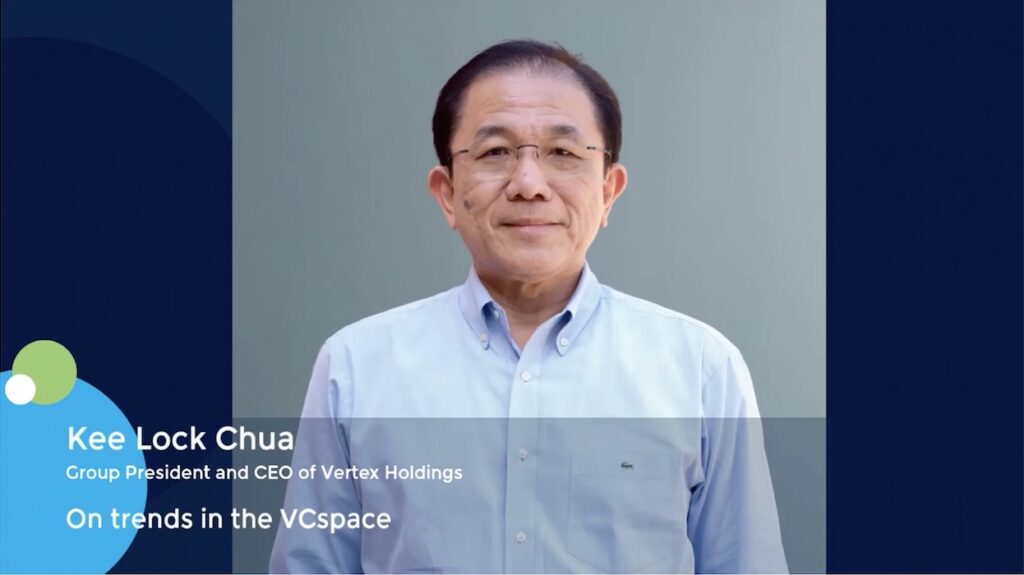PE investors assess deglobalization effect on energy transition supply chains
Private equity investors focused on energy transition know they must find ways to diversify concentrated supply chains as an increasingly deglobalized industry coalesces around US and China-centric poles. In some ways, the solution is leaning into that deglobalisation.
Hong Kong-based specialist energy investor Kerogen Capital has made localisation a key pillar of its strategy – leading to a significant focus on segments often dismissed by private sector investors such as biofuels, geothermal, and nuclear. All three are seen as relatively insulated from the supply chain constraints complicating business models in solar, wind, and electrification.
There are few inhibitors in the shift toward domestic biofuel feedstocks, while the geographical flexibility of geothermal can mitigate macro uncertainty. Nuclear fits the bill because, as an inherently sensitive resource, uranium is largely friend-shored. But there are subtler supply constraints around talent and equipment sourcing channels outside of Kerogen’s target markets.
“We’re seeing a lot more energy security announcements and moves toward domestic manufacturing and fuel sources. The US tariffs are in some ways a continuation of that trajectory, which we think is here to stay,” said Kerogen CEO Jason Cheng.
“In different times, a lot more companies could have used Russian or Chinese supply chains, but now they cannot. Governments see that as an opportunity to invest and create domestic supply chains – and so do we.”
Confidence in energy transition despite mounting supply chain challenges is mostly underpinned by a fundamental supply-demand imbalance and the rising cost-competitiveness of renewables in the past decade. This is evident in investment targeting the theme, which has continued to expand even amidst the logistical havoc of COVID-19.
Private sector deployment in renewables and battery storage, for example, has more than doubled in Asia during the 10 years to 2024, when it reached USD 35.3bn, according to Infralogic.
That trendline spiked to USD 58.6bn in 2021, but the subsequent correction has remained north of pre-pandemic levels and continued to grow. The running total for 2025 is USD 15.2bn, arguably a reflection of US tariff shock, but this still puts the year on track to match 2019.
Fundraising traction is more anecdotal but still demonstrative of the overall momentum. Standout activity includes KKR’s second Asian infrastructure fund, which closed on USD 6.4bn last year with a mandate featuring renewables and sustainable energy as key themes.
Last month, Actis, which invests exclusively in emerging markets and primarily focuses on energy transition, closed its second Long Life Infrastructure Fund, a brownfields strategy, on USD 1.7bn.
“For us, honestly, it’s fairly low risk. We do talk about supply chain every quarter, but there’s no major pinch point right now. If you’re focused on the big themes like solar, wind, batteries, and electricity lines, those supply chains are diverse and global,” said Adrian Mucalov, a partner at Actis and head of the new fund.
“Perhaps there is more risk if you’re doing something on the technological edge, where you’re more reliant on a much smaller number of potential suppliers.”
China unbundled
The elephant in the room on this point is China. Seraya Partners, a Singapore-based private equity firm focused on next-generation infrastructure, estimated in a recent whitepaper that China produces 80%-90% of global solar modules, wind turbines, and electric vehicle batteries – mature technologies yet perennially subject to innovation.
Political pressure from counterparties that need to eliminate upstream China exposure is considered negligible – and infeasibly addressable – in energy transition, according to multiple industry participants.
The practical concentration risk represented by China is more pressing given the long timeframes required to diversify global capacity in nearly monopolistic areas such as rare earths production and lithium processing. China is said to command more than 90% market share in both.
Still, Khan Yow, a managing director at Seraya, sees the 80%-90% figure as a misleading indicator. He describes China as a nearly ubiquitous link in many supply chains but far from the only link. In this view, mitigating concentration risk is about having deeper sector knowledge than the generalist investors increasingly attracted to the megatrend.
“In solar, for example, although you have a somewhat concentrated number of players, each provider in that space doesn’t have a lot of market power,” Yow said. “No one party can say they’re so much better that they can demand a 20%-30% premium over the other guys. You have to understand these nuances.”
Many investors similarly downplay the burden of China concentration. Dominik von Scheven, a managing director covering infrastructure equity at Hamilton Lane, observes that in the US, trade tensions have prompted an increase of 8%-10% in the cost of solar panels, which can erode IRR by 100 to 120 basis points. But this has done little to slow down activity in the segment.
“People have increased their stocks with solar panels for the foreseeable future while also actively diversifying their supply chains over the recent years,” he said.
Ryan Chua, a senior managing director at Stonepeak, went so far as to describe China’s dominance in solar as a positive influence on the industry that would allow energy transition to accelerate in Asia. He cited China’s pricing and quality advantages as part of this outlook.
Verena Lim, Asia CEO of Macquarie Group and co-head of its regional infrastructure platform, echoed the sentiment, pointing to growing demand for Chinese energy transition outputs on the back of tailwinds around digitalisation, rising middle-class populations, and demand for decarbonisation.
“Some markets in Asia may stand to benefit from access to Chinese supply chains and China-plus hubs, in which certain supply chains have already diversified,” she said.
Cost of change
The supply-side diversification imperative remains despite these observations and will be a significant sticking point in the medium term. The general view is that China’s advantages in quality and price will not be easily matched by other markets adding energy transition-related industrial capacity.
Calvin Ho, an energy-focused partner at Herbert Smith Freehills in Beijing, said new manufacturing centres in India, South Korea, and Southeast Asia still face challenges to be cost-competitive with China, leaving trade tensions to remain one of the main drivers of Asia’s energy transition over the next three years.
This is expected to result in significant cost increases and could affect major investment and development plans already underway, particularly in terms of large factories.
“Industry players should plan now for trade contingencies that could make or break many of these projects,” Ho noted. “Those who plan for all eventualities and remain flexible and adaptable will succeed in this environment, for example, by considering alternative deal structures like LRS [licensing and royalty scheme] deals instead of traditional joint ventures.”
Cost management during this period will largely be a matter of making the most of deal terms and counterparty networks, including reinsurance as a backstop for potential breaches in supplier warranties. Essentially, it’s about finding ways to disseminate expenses.
“You basically outsource those supply chain issues with a very well negotiated EPC [engineering, procurement, and construction] contract, for example,” said one investor. “You pass on any increase in cost to the construction company. There are different mechanisms.”
Jopy Chiang, CIO for infrastructure at Keppel, explained that long-term offtake contracts can mitigate cost pressures around supply chain realignment, adding that India and parts of Southeast Asia are emerging as “competitive” hubs for renewables-related manufacturing.
The buildout period for these hubs will be especially challenging for operators in emerging niches like high-spec photovoltaics, battery energy storage systems, and hydrogen, which will experience the greatest costs and uncertainties, according to Ho.
The SAF situation
It’s uncertain if sustainable aviation fuel (SAF) belongs on this list. The industry is in its infancy with limited counterparty networks and many uncertainty variables around going mainstream. Meanwhile, the underlying technology is proven but experiencing potentially game-changing innovation around the edges.
The main private equity play in this space is Bain Capital and Kerogen-backed EcoCeres, one of few companies globally to commercialise a SAF product based on agricultural waste. The Hong Kong-based company claims to represent about 20% of the nascent global market.
This has been achieved from a single refinery in China, but the company is eager to internationalise. A Malaysian facility is expected to be completed in 2H25, ramping up overall output capacity by 2.5x to 750,000 tonnes a year, still less than 0.5% of the global non-SAF jet fuel market.
The key supply chain bottleneck is the used cooking oil feedstock, which is primarily sourced from China, the global leader in collection infrastructure. EcoCeres has begun diversifying its feedstock supply into Southeast Asia and continues to explore new channels. This is in conjunction with technical work on treatment and processing that could expand procurement options.
James Tam, a partner at Bain, believes SAF will ultimately feel the localisation effect. This will be driven in part by energy security and supply chain uncertainty issues, as well as the idea that many producers will not be limited to waste materials as feedstock. There is also the economic and environmental practicality of minimizing transport between upstream and downstream players.
“We look to a future where we have a China SAF plant where we domestically source the feedstock and serve the domestic SAF market in China. In Malaysia, we can offer a regional ASEAN feedstock system to serve the ASEAN market for SAF going forward,” said Tam, noting that Australia, the Middle East, and Europe were among the contenders for EcoCeres’ next refinery.
As seen with nuclear, it is not only new technologies experiencing supply chain hang-ups in the current macro environment. Actis’ Mucalov identified traditional gas as one of the most squeezed segments in the energy transition due to increasing demand and a lack of quality gas turbine manufacturers globally.
“The natural forces of supply and demand will rectify that in the medium term, but in the immediate term, it’s about relationships,” he said.
“You have to be confident that you have the contracts in place to sell the energy. It’s all doable, but you need to be conscious that you can’t just call a supplier and expect the gas turbine to be on a ship the next day. It has to be part of medium-term planning.”
Consolidation effect
Other opportunities tied to geopolitics-driven realignment include a potential buildout of liquefied natural gas (LNG) infrastructure and LNG-to-power projects as governments agree to boost imports from the US in response to tariff-related pressures. Vietnam has reached such a deal, and Adam Moncrieff, a partner at Orrick, Herrington & Sutcliffe, suggests that the likes of Japan and South Korea could follow suit.
However, the overarching impact of supply chain disruption on energy transition could be that it results in a consolidation of operators and investors. Large organisations have various advantages in an uncertain supply chain environment, and as they leverage these advantages against smaller competitors, they will accumulate market share.
Daniel Cheng, head of Asia Pacific renewable power and transition at Brookfield, observed that the size of his firm facilitates the establishment of stronger relationships with suppliers because it can take a longer view than smaller players. The idea is that commercial engagements and conversations needn’t be affected by a two- or three-year disruption in supply chain norms.
Perhaps more important is the geographic balance and optionality that comes with a global footprint. When one source of production becomes less accessible or less attractive due to trade complications, there will typically be another source experiencing the opposite effect.
“Global diversification and scale gives us more levers to pull and makes components like solar modules fungible. That’s a true competitive advantage in energy transition because we have definitely seen polices come out around the world that have introduced supply chain disruption in critical clean-tech equipment,” Cheng said.
“It’s really the large players that can navigate through these periods that are going to come out the other end and be able to make this work as part of a multi-decade trend.”
Even as conglomerates and larger companies look to play a more substantial role, there will still be small to mid-size opportunities in the supply chains that feed into them. According to Hamilton Lane’s von Scheven, energy transition as a theme will continue to be significantly characterised by local champions and connections with local developers.
That is where a lot of private capital will be directed, especially picks-and-shovel-style plays. Seraya, for example, has accessed offshore wind but circumvented the industry’s highly complex and seasonally sensitive supply chains by investing in Singapore-based Cyan Renewables, a diversified maritime services fleet operator significantly focused on turbine support.
Smaller investors, meanwhile, will access energy transition in the local operators and distributed technologies that are under the radar of global actors and largely insulated from supply chain issues.
There is potential to scale up historically underinvested segments around heat pumps, wiring, cables, transformer boxes, grid management software and services, and virtual power plants, as well as labour and equipment related to facility installation and mounting systems. The caveat is that the growth phase in such businesses is fleeting.
“Specialised companies in that space are likely to see significant decadal growth. It’s less sexy, but there is, in theory, a market that is going to consistently grow,” said Michael Taylor, a global energy transition consultant at France-based EME Consulting and former head of renewable energy costs and outlook at the International Renewable Energy Agency (IRENA).
“For investors, it’s about identifying the early growth phases where margins are good. In the longer term, a lot of the energy transition is not going to be high-margin business. It’s going to be high volume, low margin. There’s a lot of disconnect about that in the investment discussion.”
[Editor’s note: The fourth paragraph under the subhead “Cost of change” has been amended to clarify that LRS refers to the licensing and royalty scheme.]













